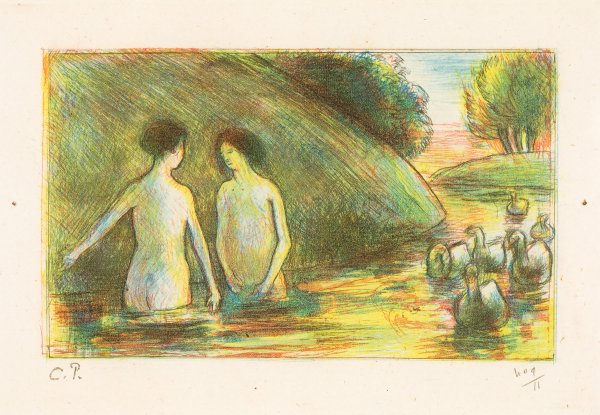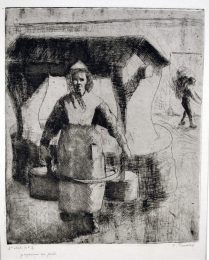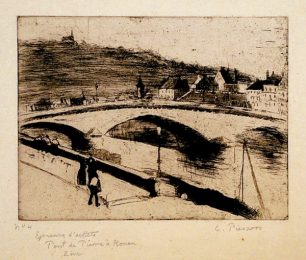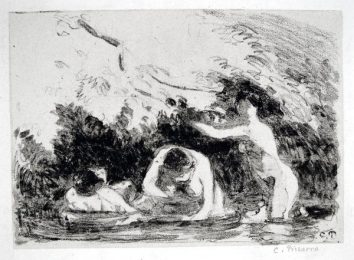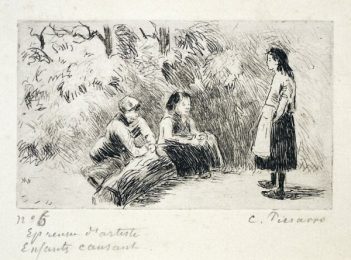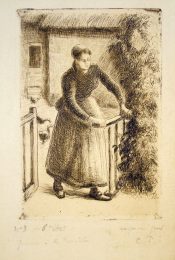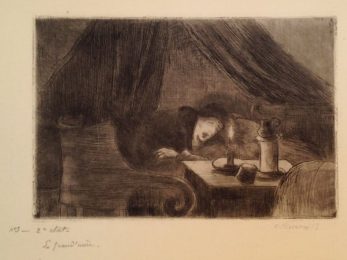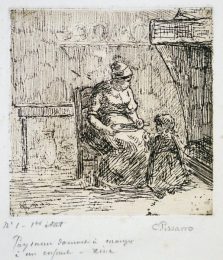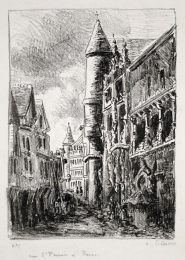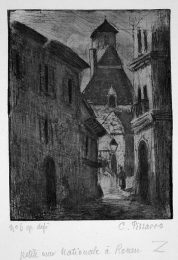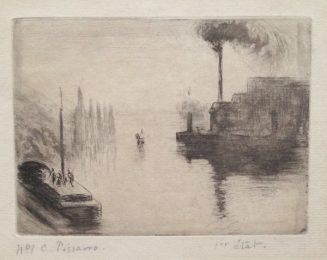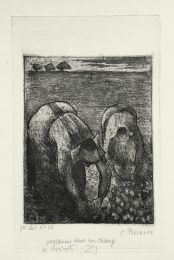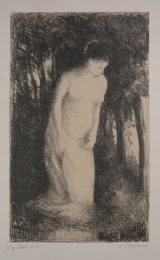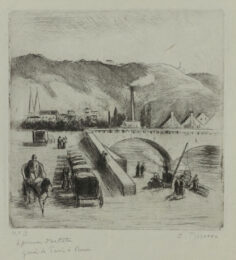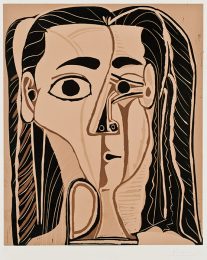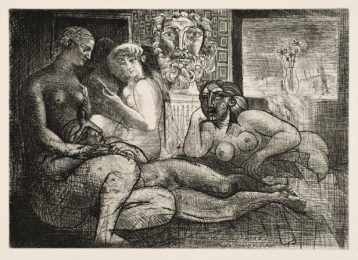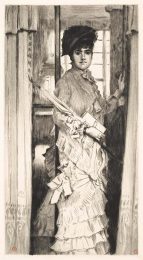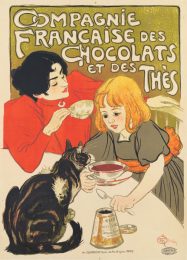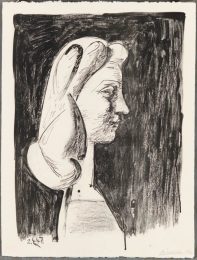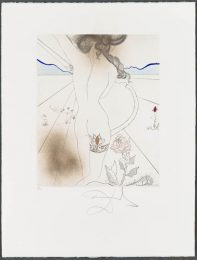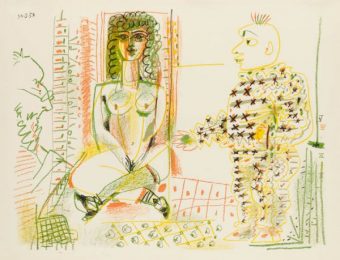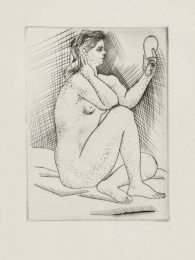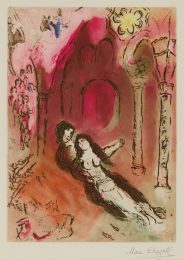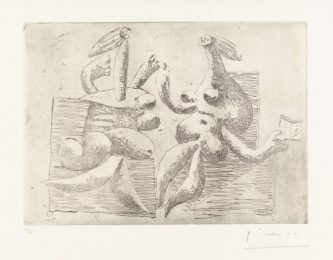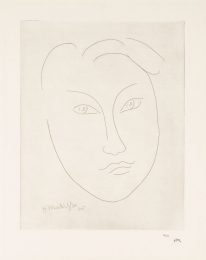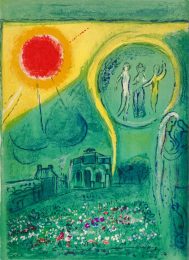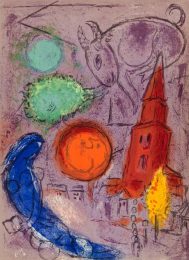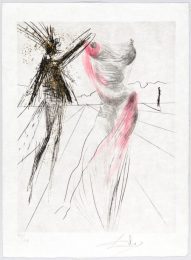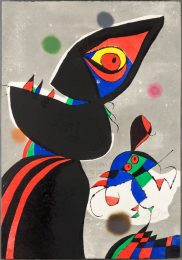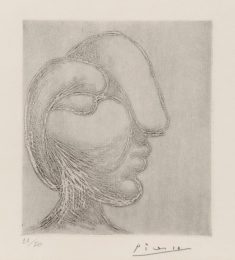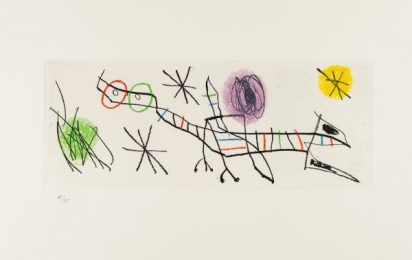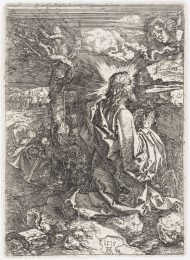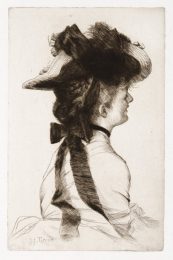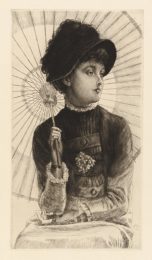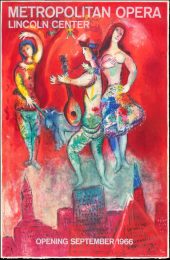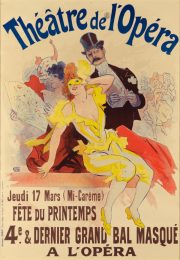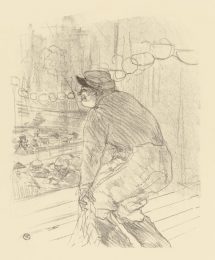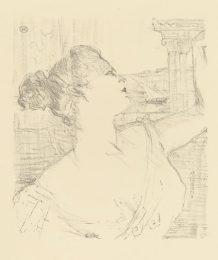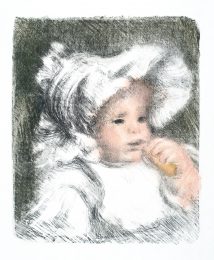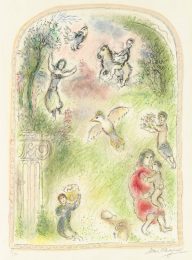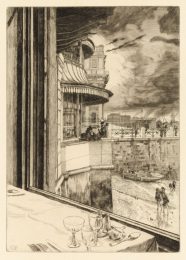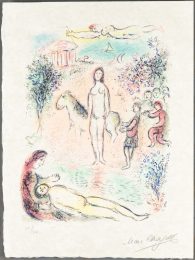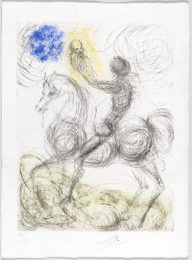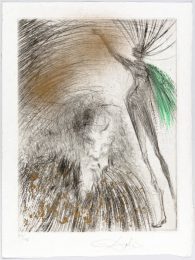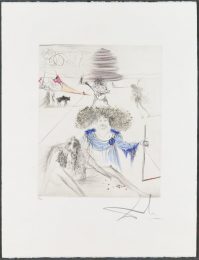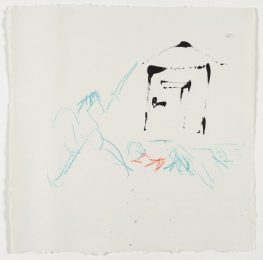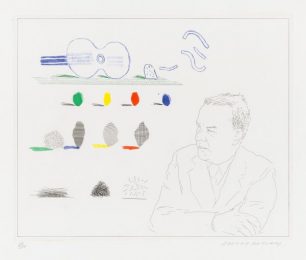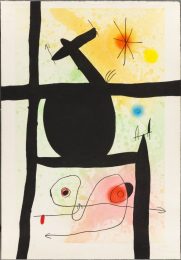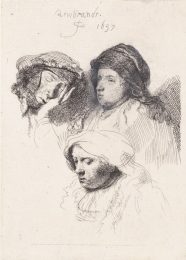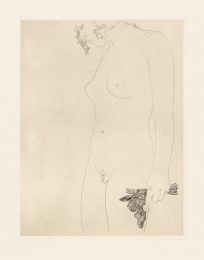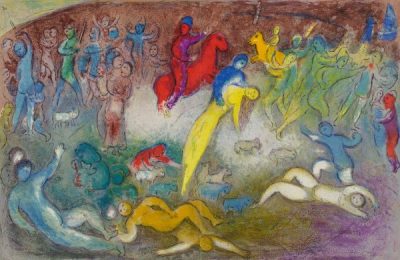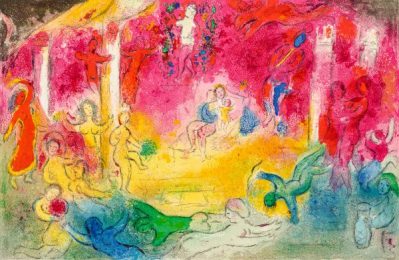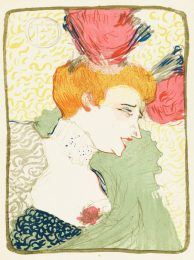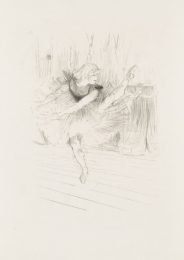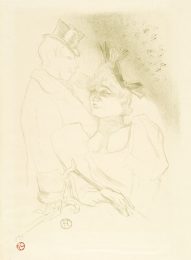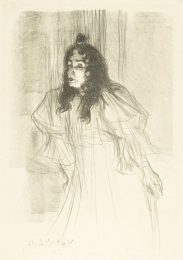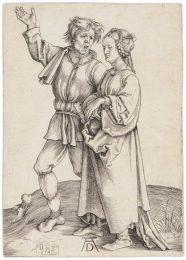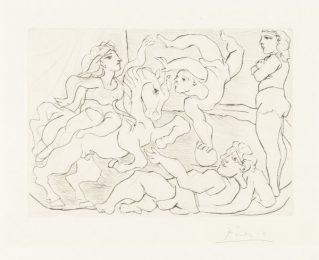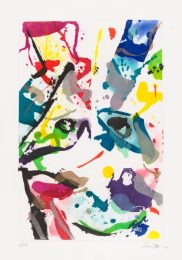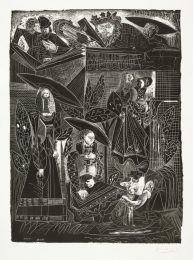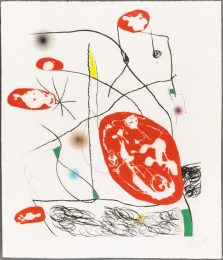Details — Click to read
Original etching printed in four colors from four plates (blue, yellow, red, black) on laid paper bearing a portion of an unidentified watermark
Signed with the artist’s estate monogram stamp [Lugt 613e] in the margin below the left corner of the plate.
A richly printed impression of Delteil’s ninth and final state of this extremely rare etching,- from the edition of eleven printed by Alfred Porcabœuf in 1930 under the supervision of Jean Cailic, numbered in pencil in the margin lower right (Porcabœuf also printed one épreuve d’essai and one bon à tirer for a total of thirteen impressions, the plates were then canceled and presented to the Bibliothèque Nationale along with one of the numbered impressions), apart from the edition of only ten impressions of this state printed by Pissarro prior to 1903.
Catalog: Delteil 119 ix/ix; Cailac 119.
Literature regarding this artwork: Jean Leymarie & Michel Melot, The Graphic Work of the Impressionists: Manet, Pissarro, Renoir, Cézanne, Sisley, Thames and Hudson, London, 1971, no. P. 114 (ill.); Michel Melot, L’Estampe Impressioniste, Paris, 1974, 257 & 258 (ill.); Phillip Dennis Cate & Marianne Grivel, From Pissarro to Picasso: Color Etching in France, Zimmerli Art Museum, Rutgers University, New Jersey, 1992, no. 142, p. 112 (ill.).
This etching is one of only six prints, one lithograph and five etchings, printed in multiple colors to have been undertaken by Camille Pissarro during his entire career. After having been exposed to the color aquatints of Mary Cassatt, Pissarro became obsessed with the idea of making color prints of his own. However, in the words of Pissarro’s son, Ludovic Rodo:
Pissarro frankly hated the aquatint in color printed à la poupée, that is, a colored aquatint in which a number of colors are printed on the same plate at the same time, a fashion which was becoming popular. He then took to making experiments in color printing but in a different way. He used for this four plates, one for each color, blue yellow and red, and a keyplate, black, for the outline. These plates were passed under the press in succession, as in the typographic process; the great difficulty in this attempt was to secure perfect register with the needle on damped paper, a matter calculated to drive a person mad with impatience! He therefore gave up the idea. But these experiments are very interesting, although he was not himself quite satisfied. . . Each impression of these etchings is different and, so to speak, unique owing to the variations in tint, and if the register is not perfectly accurate it does not matter much, as the composition is not encircled in a rigid outline, but remains a little soft and vague.

